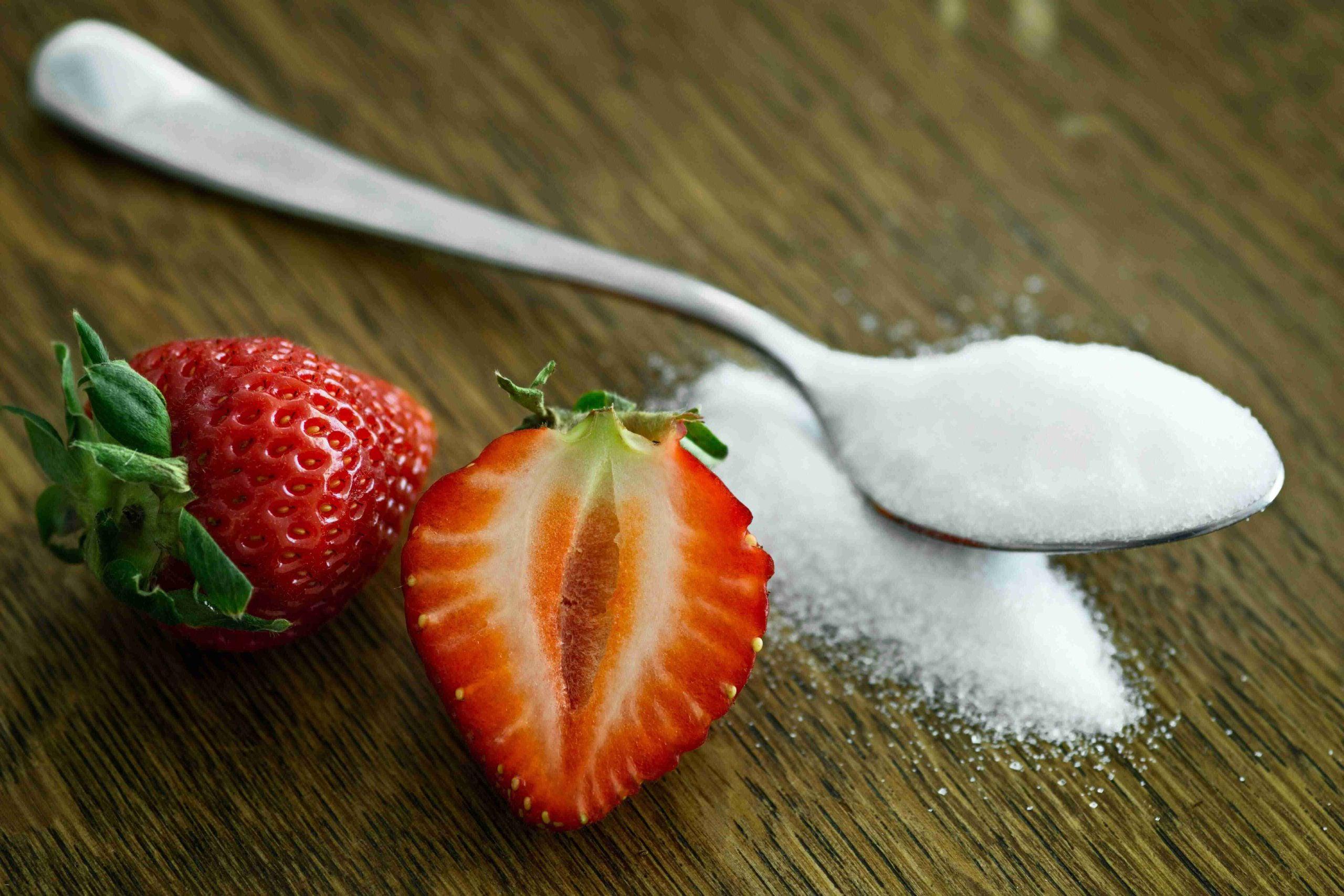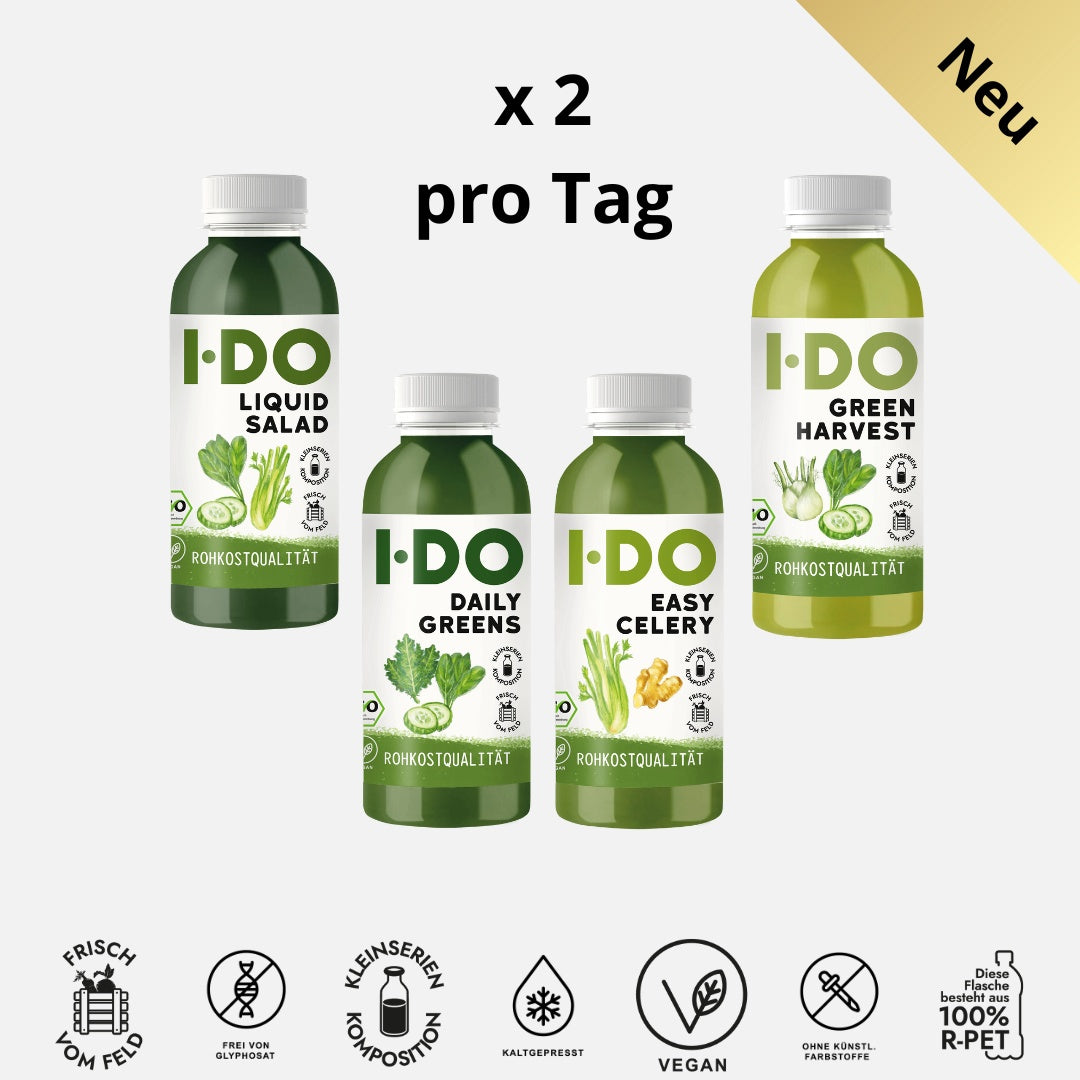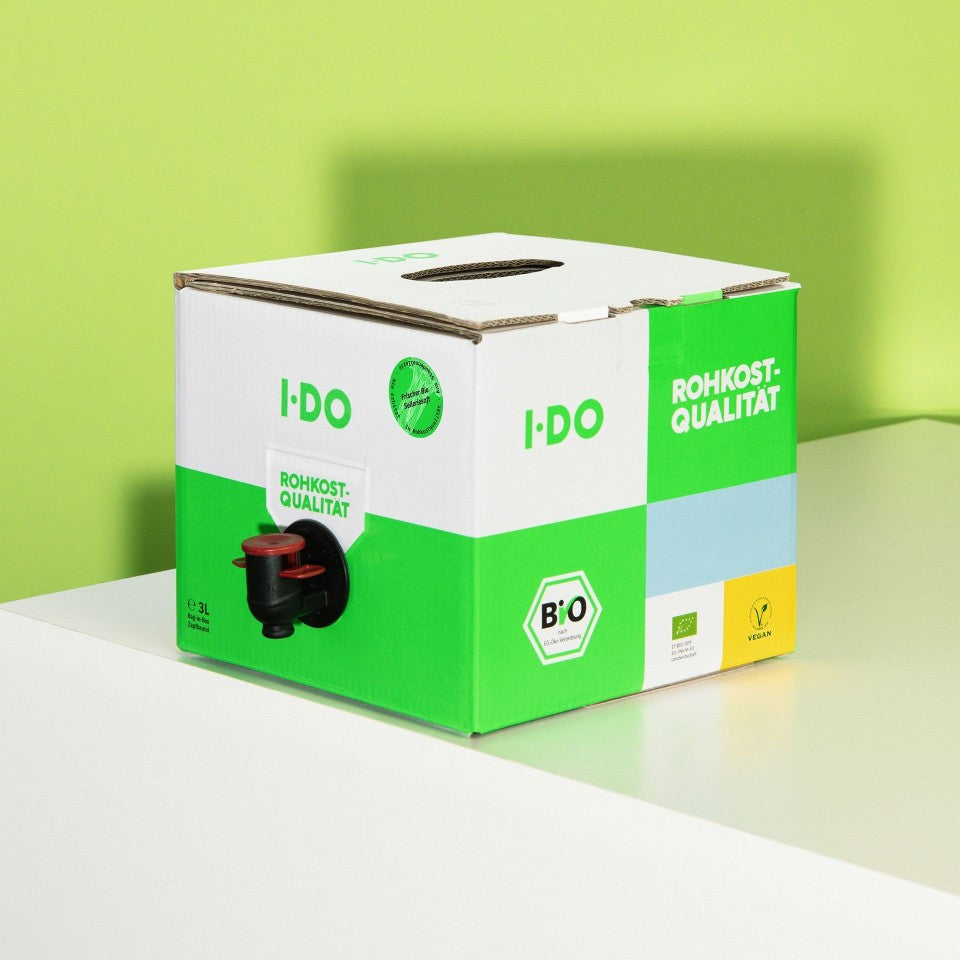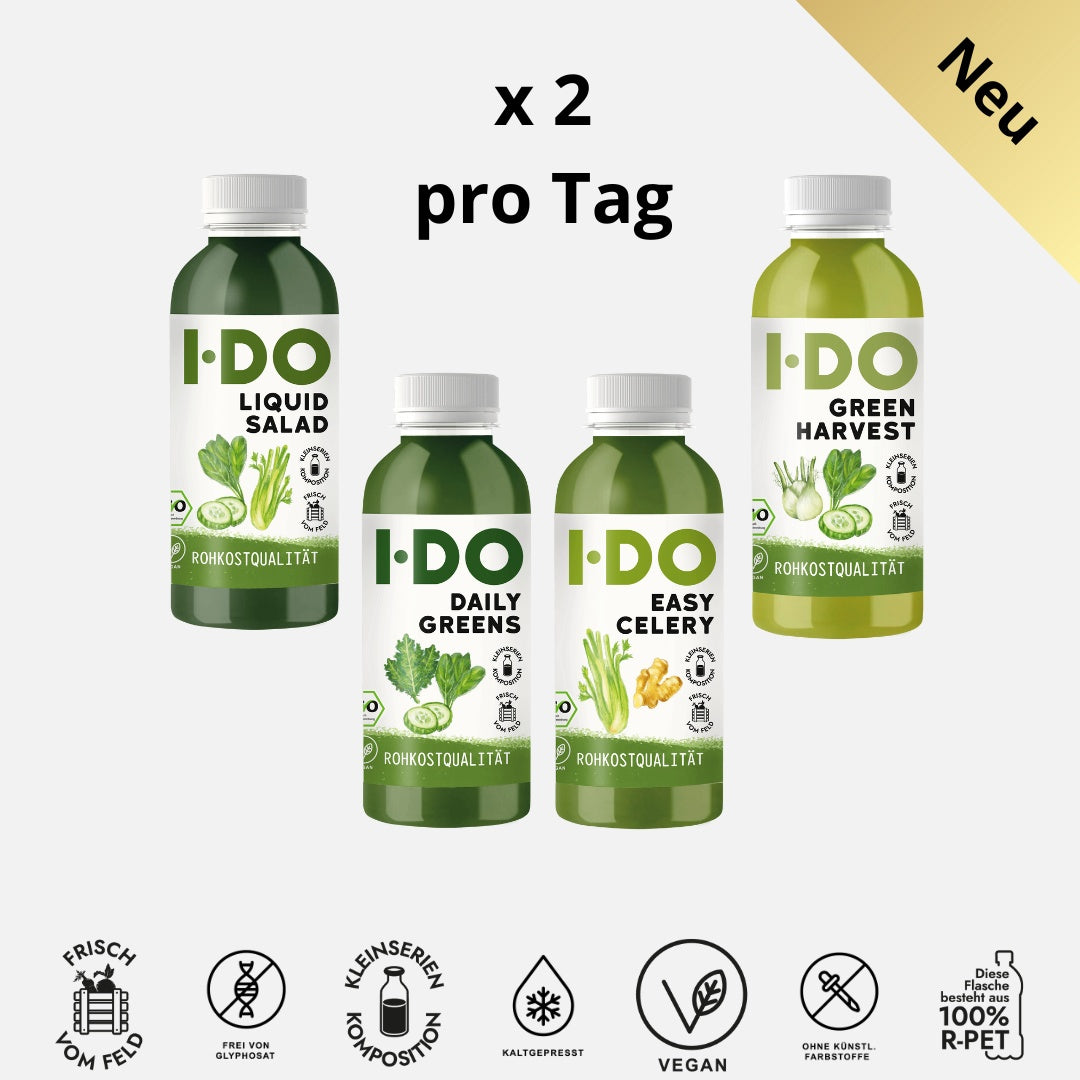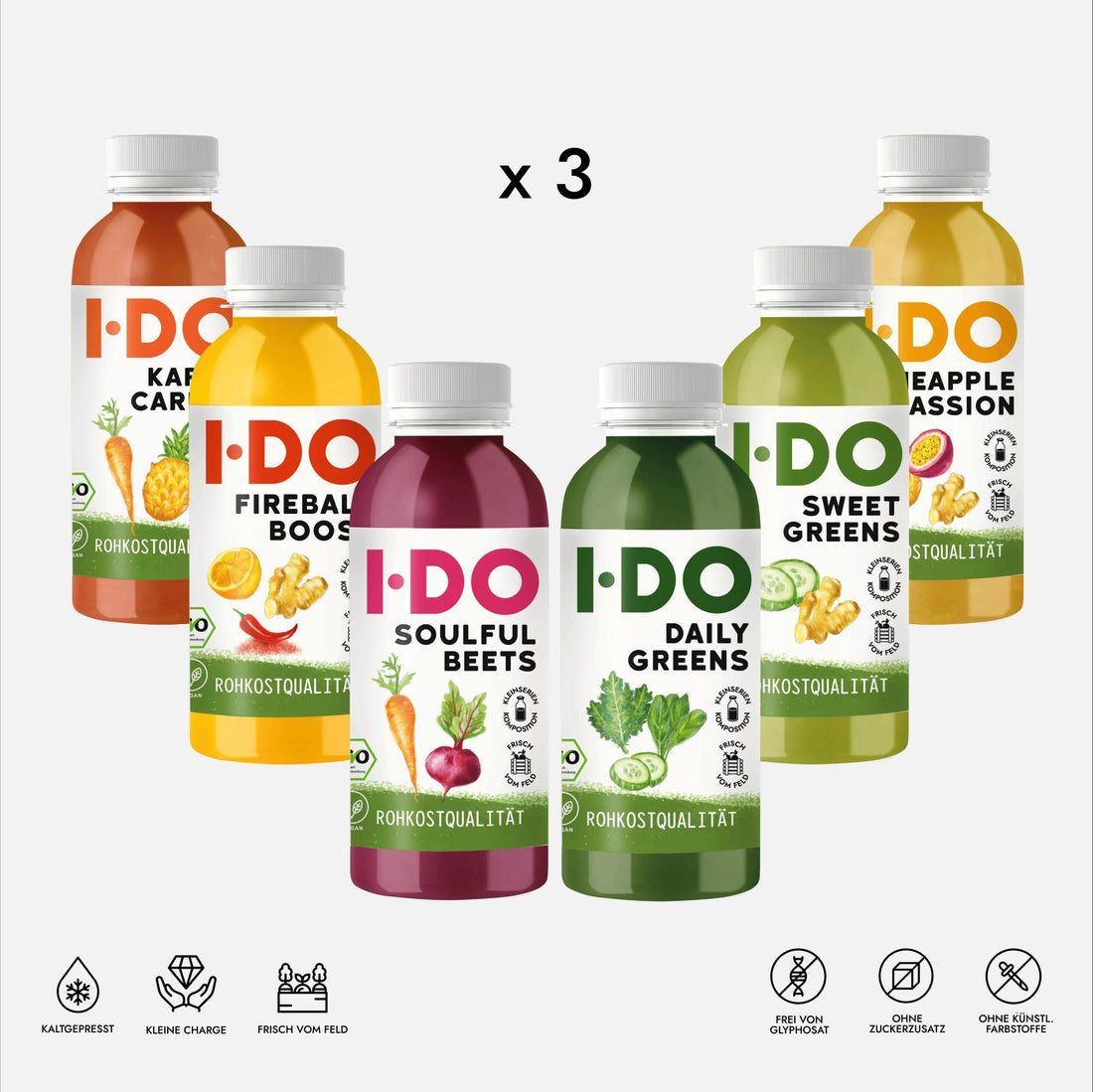Fructose, glucose, sucrose, … – we're all familiar with these terms. But what do all these names for sugar mean? Is there good and bad sugar? With the help of a little chemistry (don't worry, you don't need to dig out your dusty chemistry knowledge from school), we want to explain the differences between fructose and glucose in this article.
Fructose and glucose – sugar as a vital substance?
Clearly, our body needs sugar. We think of it as providing energy, for cell building, and so on. However, our body doesn't need sugar in the form of table sugar, but rather blood sugar, glucose (Yudkin & Lustig, 2014, p. 43).
But how much do we need? The figures for Germany speak for themselves: In 2022, Germans ate and drank an average of 34.8 kilograms of sugar per capita. This is almost twice the amount that the World Health Organization (WHO) has recommended for many years as the maximum amount of sugar intake. By comparison , indigenous peoples consume around 3 to 5 kilograms of sugar per year (Wölnerhanssen, 2020). The alarming thing is that our bodies don't depend on this external supply of sugar. Sugar from additional sources is a pure luxury product that our bodies don't need (Lustig, 2019; Wölnerhanssen, 2020).
Reason enough to take a closer look at the matter.
Basic knowledge of sugar
The general term "sugar" is commonly used to describe many different substances. However, these should be named and considered separately. Sugar is generally considered a carbohydrate. Depending on the number of sugar molecules, a distinction is made between:
- Simple sugars (monosaccharides)
- Disaccharides and
- Complex sugars (polysaccharides)
The well-known household sugar ( sucrose ) consists of glucose and fructose – more precisely, one molecule of glucose and one molecule of fructose ( Yudkin & Lustig, 2014, p. 43 ).
Fructose and glucose are both simple sugars, meaning they each contain a sugar molecule .
Glucose and fructose – what do the terms mean?
Glucose is a white, water-soluble, and sweet-tasting powder. It is an important energy source for the human body. The brain also requires glucose as a nutrient. In humans and animals, glucose is stored in the form of glycogen, and in plants in the form of starch. Fructose is also a white powder that is more soluble in water and tastes sweeter than glucose . You can find even more background information about glucose and its different types in this video .
Both fructose and glucose have the molecular formula C6 H 12 O 6 . However, they differ in their chemical structure and belong to different chemical groups (Lustig, 2019, pp. 258-259). It's no wonder that there are so many differences between glucose and fructose. .
Processing of glucose and fructose in the body
In principle, the human body can absorb sugar in the form of simple sugars through the blood. Therefore, when absorbing sucrose (table sugar), the body relies on the breakdown of the sugar into glucose and fructose. If sugar is ingested not in the form of sucrose, but as glucose or fructose, these can be processed directly. But what happens to the fructose and glucose in the body?
In the human body, glucose enters the bloodstream via the intestines and can be directly converted into energy by the cells. Fructose , on the other hand, is primarily converted into fat in the liver and is not directly used for energy production ( Wölnerhanssen, 2020 ).
Glucose is stored in the body in the form of glycogen. Furthermore, the intake of glucose causes a significant increase in blood sugar levels and the release of insulin. Furthermore, satiety hormones are released (Lustig, 2019, pp. 156-157). In contrast, fructose does not affect blood sugar levels or the release of insulin in the body. Satiety hormones are also not released (Wölnerhanssen, 2020).
Fructose and glucose in food
Glucose is found naturally in many foods.
Fructose , or fruit sugar, is, as the name suggests, found in greater quantities in fruit and honey. Fructose is also becoming increasingly common in processed foods. The reason for this is that fructose is much sweeter than glucose. In the same amount, fructose is twice as sweet as glucose. Therefore, less fructose is needed than glucose to sweeten a dish. Because fructose is much cheaper to produce than sucrose (table sugar), fructose has been increasingly added to processed foods in recent decades (Yudkin & Lustig, 2014, p. 43). You can find out more about fructose in processed foods and why the artificially added sweetness of fructose can be a problem in this video .
Now you're asking yourself: What about fruit? It contains fructose, doesn't it? - You're absolutely right. However, in addition to fructose and glucose, fruit and vegetables contain many other nutrients, fiber, and vitamins. This means that not only glucose and fructose are absorbed, but also many other nutrients. Furthermore, the fiber they contain ensures that not as much sugar can be absorbed at once, slowing down sugar absorption in the body. This allows the liver to keep up with the sugar intake. Therefore, it's not so easy to consume too much sugar from natural foods like fruit and vegetables (Lustig, 2019, pp. 171-173).
And what does a juice cleanse look like?
During a juice cleanse , you treat yourself to a break and consciously abstain from solid foods, from which you normally obtain the energy your body needs. Juices are your only source of nutrition and therefore also your only sugar intake. With our cold-pressed I DO juices, you absorb the sugar and nutrients of a few servings of vegetables and fruit per day. However, your sugar intake is limited during this time, as the amount of juice per day is strictly controlled.
Of course, no added sugar is added to our I DO juices . Thanks to the cold-pressing process, your body benefits from the full range of nutrients and minerals from the fresh vegetables and fruit – unlike with conventional pasteurized juices.
Conclusion
One thing is certain: not all sugars are created equal. As a reminder: Sucrose is table sugar and belongs to the disaccharides, consisting of fructose and glucose. Fructose and glucose are both monosaccharides (simple sugars).
Less sugar – whether glucose or fructose
As with all food components, balance is key! A balanced diet with sufficient amounts of all important components meets the body's glucose and fructose needs. Sugar should only be consumed through foods in which it occurs naturally. Therefore, be conscious of consuming sugar in its naturally occurring form through fruits, vegetables, grains, etc. Excessive sugar consumption can have harmful effects on the body's organ systems ( Wölnerhanssen, 2020).
In the following magazine articles, you'll learn more about sugar, as fructose and glucose aren't the only forms in which sugar can be consumed. There's also a lot to learn about other types of sugar, such as cane sugar, alternatives like agave syrup, and sugar additives.
Sources
Berneis, K (2012). The search for the sweet placebo. Not all sugars are created equal! Swiss Medical Forum, 12(1-2):6-7.
Lustig, RH (2019). The Bitter Truth About Sugar – How Obesity and Other Chronic Diseases Develop and How We Can Conquer Them. 4th edition. Munich: Riva-Verlag.
Wölnerhannsen, K. (2020). Refined sugar – valuable energy or physiological nonsense? Quintessence Dentistry, 71(5).
Yudkin, John & Lustig, Robert P. (2014). Pure, White, Deadly: Why Sugar Is Killing Us – and How We Can Prevent It. Lünen: Systemed Verlag.


